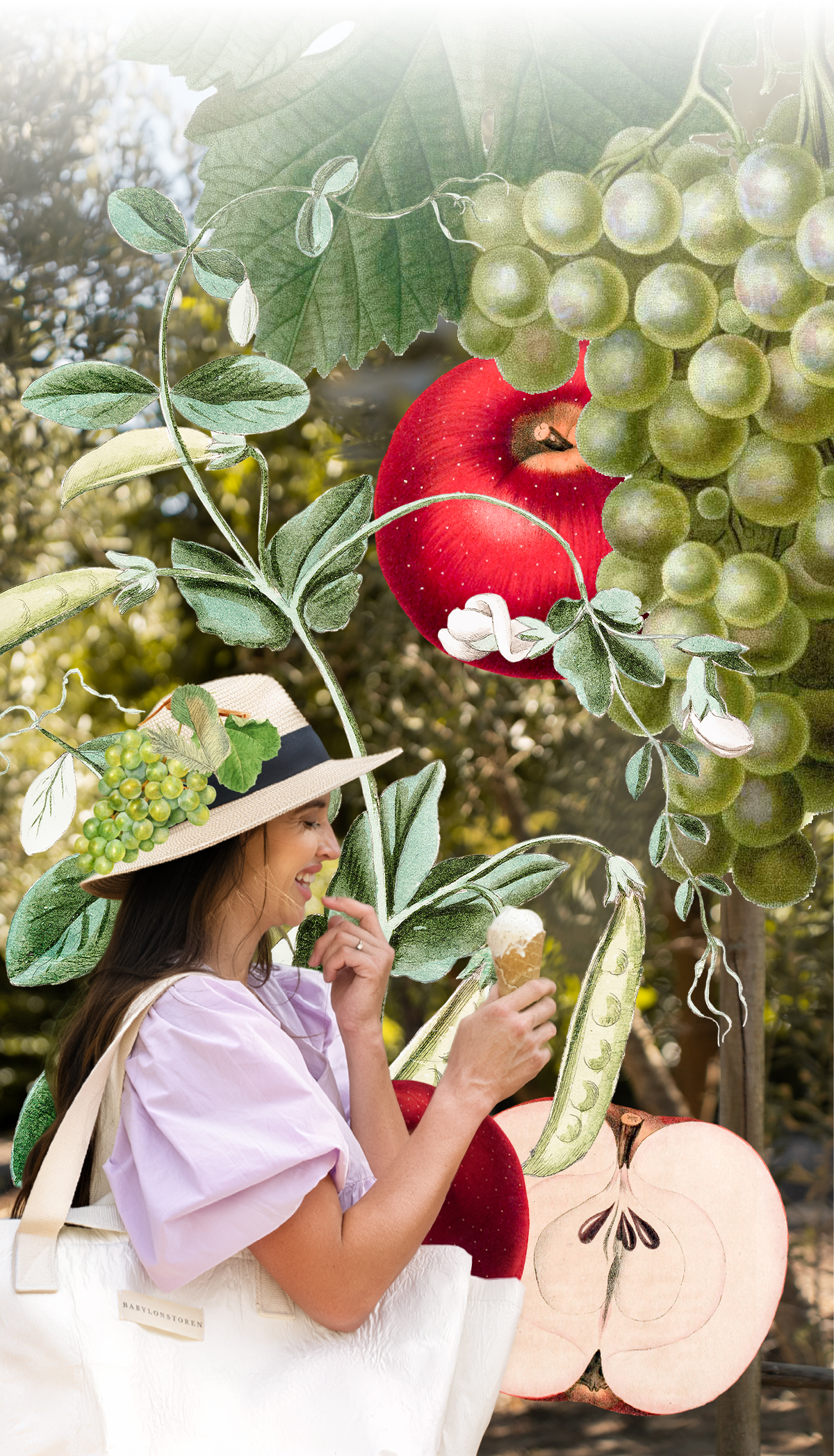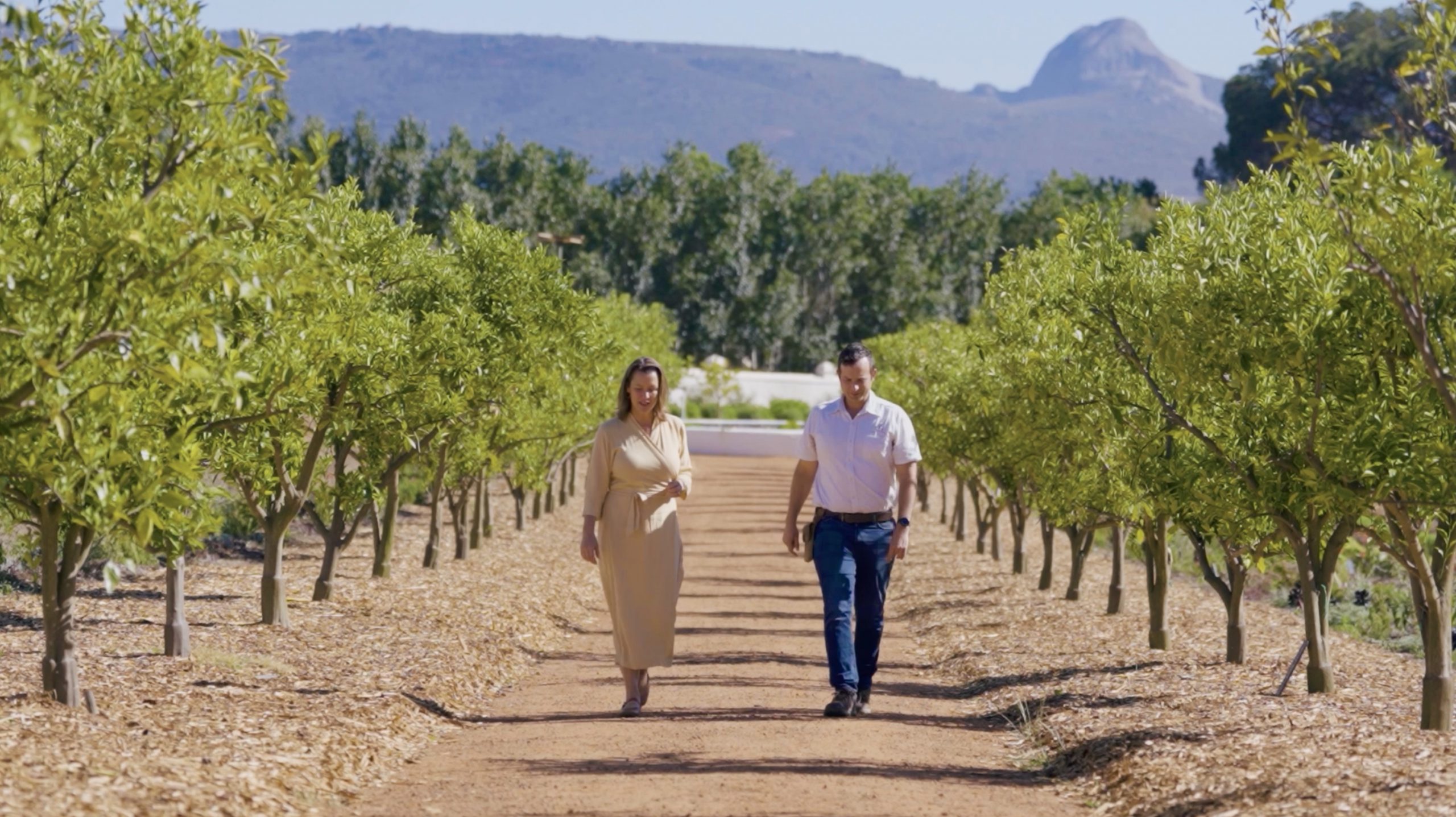Buzzing News Vol. 4
May 13th, 2024A week in the life of Babylonstoren’s VIP garden workers, by our resident beekeeper and entomologist, Arné Stander.

Overview
Night temperatures have dropped to 10°C. Day temperatures are fluctuating between mid-20’s and low 30’s. A few weekends ago we had a storm with very strong southeastern winds. Despite my fears of a eucalyptus branch falling on a hive, my hives were all fine after the storm. I went to the eucalyptus camp this week to harvest honey and collected two supers of honey frames from our hives.

Frames from the previous harvest added to the supers were built with comb. When we remove the supers before winter, these frames will be stored and reused in the spring.

In one hive the super was quite dormant. Only two frames contained honey, whereas the rest of the frames were built with comb, but not filled with honey. The bees are also not working much in the super. Therefore, I removed the super, took the frames and replaced the harvested ones with these.
The hives without supers look good and have ample honey. Brood patterns look good. In the new season these hives will get supers.

Invasive wasps
Over the past few weeks, I have killed multiple nests of German wasps. The photo below shows a German wasp attacking a defenseless drone while I was harvesting honey. The wasps ambushed the bees on the ground. One worker bee’s abdomen was bitten off by a forager wasp.


Below is one of five nests found in the citrus orchard, that have all been exterminated. As wasps are diurnal, or active by day, it is preferable to exterminate them at night when all the wasps are in the nest.
A piece of papery comb was found next to the nest. The nest entrance was very wide, and the papery wall is visible, which is extremely unusual. I therefore suspect that the nest was predated by a water mongoose and the nest lost some comb layers in the attack. The wasps had to repair the nest and fill up most of the hole to reduce the opening size. However, they did not properly close the opening, leaving the nest vulnerable to another predation event. Mongooses predate for larvae which are rich in protein. Nevertheless, the nest was exterminated and removed.

Final remarks
In the coming weeks I will continue to harvest the last of the honey and will inspect the hives in the Soetdoring camp.
BUZZ WORDS
Super - Any hive body, usually a smaller box, used for the storage of honey which the beekeeper intends to harvest. Normally it is placed above the brood chamber(s). Supers are typically medium or shallow-sized boxes.
Apiary - Colonies, hives, and other equipment assembled in one location for beekeeping operations.
Beehive - An artificial cavity for a bee colony to live in, usually a box or boxes with movable frames.
Brood - Immature bees that are still inside their cells. Brood can be in the form of eggs, larvae, or pupae of different ages.
Capped honey – When bees cover their honey with wax, much like putting a lid on it.
Queen - A female bee with a fully developed reproductive system. Larger and longer than a worker bee.


